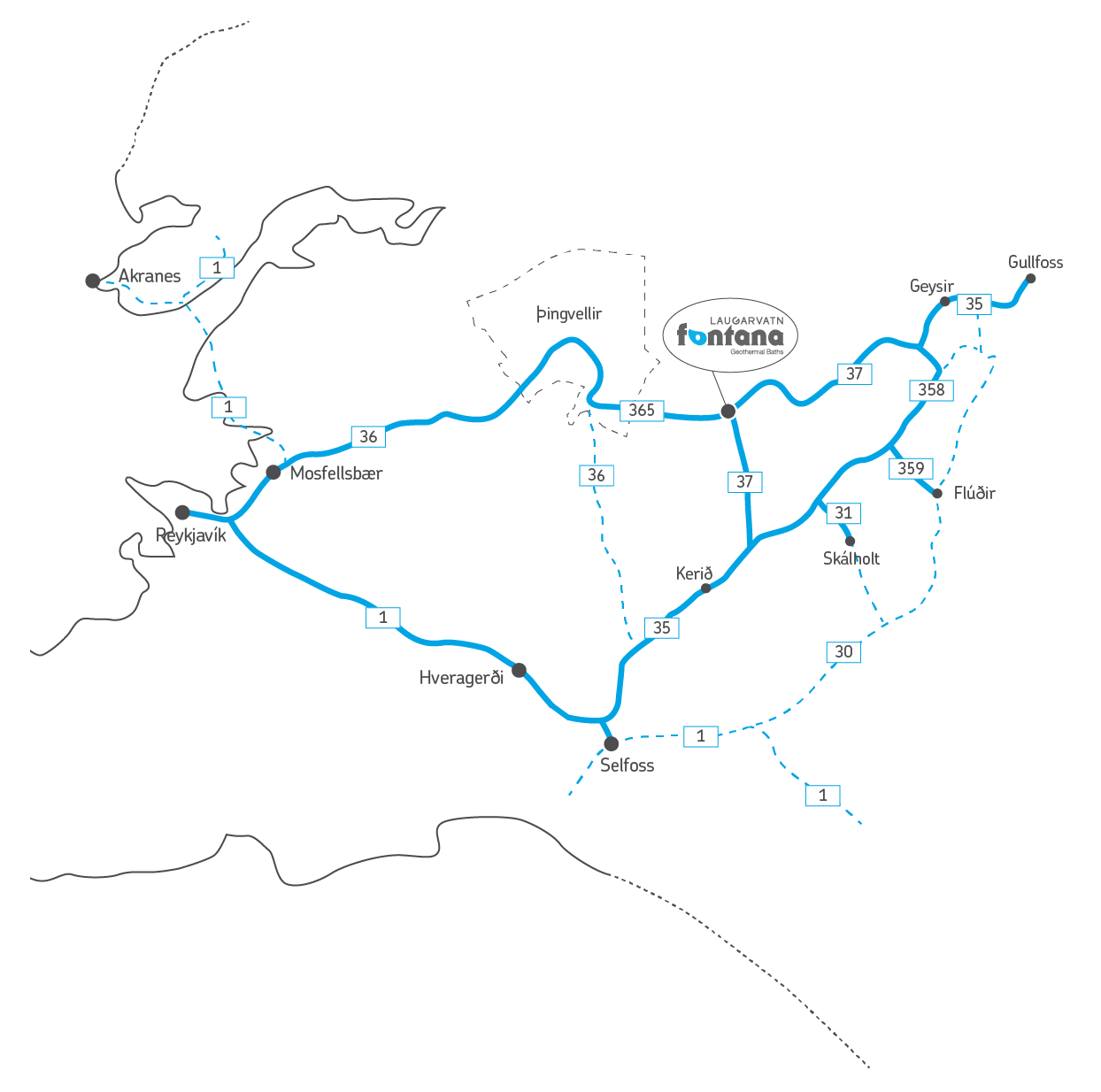About Laugarvatn Fontana
A rejuvenating stop
Laugarvatn Fontana Geothermal Baths is a must experience en route to the Golden Circle, located within 80 km from Reykjavik. The Baths are one of the natural wonders of this geothermal area south of the capital, along with popular attractions such as Thingvellir National Park, Geysir and Gullfoss. Laugarvatn Fontana rests on the shores of the beautiful Lake Laugarvatn, which can be admired from the baths. The community of Laugarvatn has a long tradition of using the mineral-rich healing waters of the area for relaxation and restoration of body, mind and soul.
Laugarvatn Fontana is a reinvigorating site where you can enjoy the healing powers of the geothermal water; soak in a natural pool, listen to the bubbling hot spring in the steam rooms, or for the venturesome, take a dip in the refreshing lake. The warm pools and hot pots vary in depth, size, and temperature just like the three traditional steam rooms.
Like many locations in Iceland, Laugarvatn belongs to a hot zone. In the grounds of the village, the lake and the shore of the lake, boiling waters erupt into hot springs. The hot water and springs have been used for cooking, bathing, geothermal house heating and healing steam bathing since 1929.
Local Legends
The geothermal activity of the area is one of the reasons for the settlement of Laugarvatn. But not only locals utilized the warm water. Legend has it that when Iceland converted to Christianity in the year 1000 AD, some chieftains did not want to be baptized in the ice cold water of Lake Thingvellir (about 20 km away) - but rather the warm springs and shore of Lake Laugarvatn. One of these fountains is called Vigdalaug, just 200 meters from Laugarvatn Fontana.
Several centuries later, Iceland’s last Catholic bishop, Jon Arason (b.1484 – d. 1550) and his son, were executed during the reformation. Their bodies were later exhumed and washed at Vigdalaug before being re-buried at Hólar, a former episcopal see in North Iceland.


